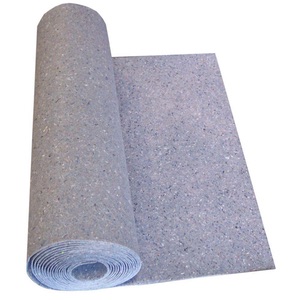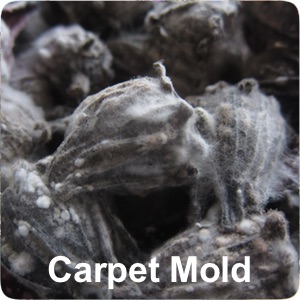
More Articles
Carpeting certainly makes a house cozy and warm during the winter months. Getting out of bed and putting your feet on a warm carpet really beats a cold wood, tile or linoleum floor. The problem is the price we may be paying for this comfort. Whatever is in the air eventually falls out of the air. This particulate can include virtually every conceivable material. Dander (skin flakes), cotton or synthetic fibers, organic detritus (partially decomposed organic matter), and paper fibers are generally the most plentiful materials found in indoor dust. Other materials commonly found include construction dust (calcite or gypsum grains), bacterial cells, fungal spores and mycelia, fiberglass or mineral fibers, quartz grains (sand), paint chips, pollens, and other allergens plus a much wider list that would be difficult to exhaust.

No matter how hard you try, carpeting cannot be thoroughly cleaned. To a large degree, cleaning carpets tend to grind in the dirt as far as possible to just above the floor or the carpet pad. Even after cleaning, many of the contaminants are still there to do their harm. Remember, dirt is not just dirt. Indeed, dirt and dust consist of many potential irritants, allergens, toxins, and pathogens.
Carpets also tend to be susceptible to water damage. Floods from rain and plumbing leaks as well as from overflow of facilities such as water heaters, dishwashers, washing machines, and toilets often wet carpets. Unless carpets that have been flooded or severely wetted are dried out quickly, i.e. within 24 to 48 hours, bacterial growth will have already occurred and fungal growth will have started. Repeated wetting will add to such contamination. Even cleaning carpets with water can result in microbial growth unless the drying is very timely.

Fungal and bacterial types found in water-damaged carpets often include high levels of Penicillium, yeasts and gram-negative bacteria. Penicillium and yeasts are both potentially allergenic. Species of Penicillium can produce toxins and have the potential to be infectious or more usually opportunistically pathogenic, which means infectious for those with impaired immune systems. Gram-negative bacteria produce an extra-cellular toxin called endotoxin that can elicit a myriad of health symptoms. Exposure by inhalation to this toxin is associated with a number of pulmonary diseases. Among the symptoms related to exposure by inhalation to endotoxin are fever, cough, body aches, nausea, shortness of breath, chest tightness, airflow obstruction, airway inflammation, and low lung function. Endotoxin is one of the toxins that is likely implicated with such situations as "Sick Building Syndrome." Such exposure also reportedly strengthens immune system responses. Because of this strengthening of the immune system, exposure to endotoxin can apparently cause the exposed individual to be more susceptible to allergies or to developing allergic reactions.
There are certain levels of gram negative bacteria that cause some indoor air quality authorities to express concern. That rather arbitrary level is one million (1,000,000) colony forming units (CFU) per gram of dust or other material. I have often taken samples from carpeting that far exceed the level of concern.
If you are planning the nearly ultimate in luxury by having your bathrooms carpeted, please reconsider. That warm, plush carpet may feel wonderful on your (wet) feet as you step out of the shower or bath, but consider the contamination in the carpet with continual wetting.The carpeting in such areas as bathrooms, kitchens, and laundries are very likely to become sources of bacterial or fungal growth no matter how carefully maintained. A soft mat or rug can be just as comfortable on your feet and is much preferable because it can be properly cleaned or laundered to limit or eliminate potential contaminants.
The bottom line in terms of carpeting in your home is to keep them dry and vacuum them often using HEPA (High-Efficiency Particulate Arresting) vacuums.






